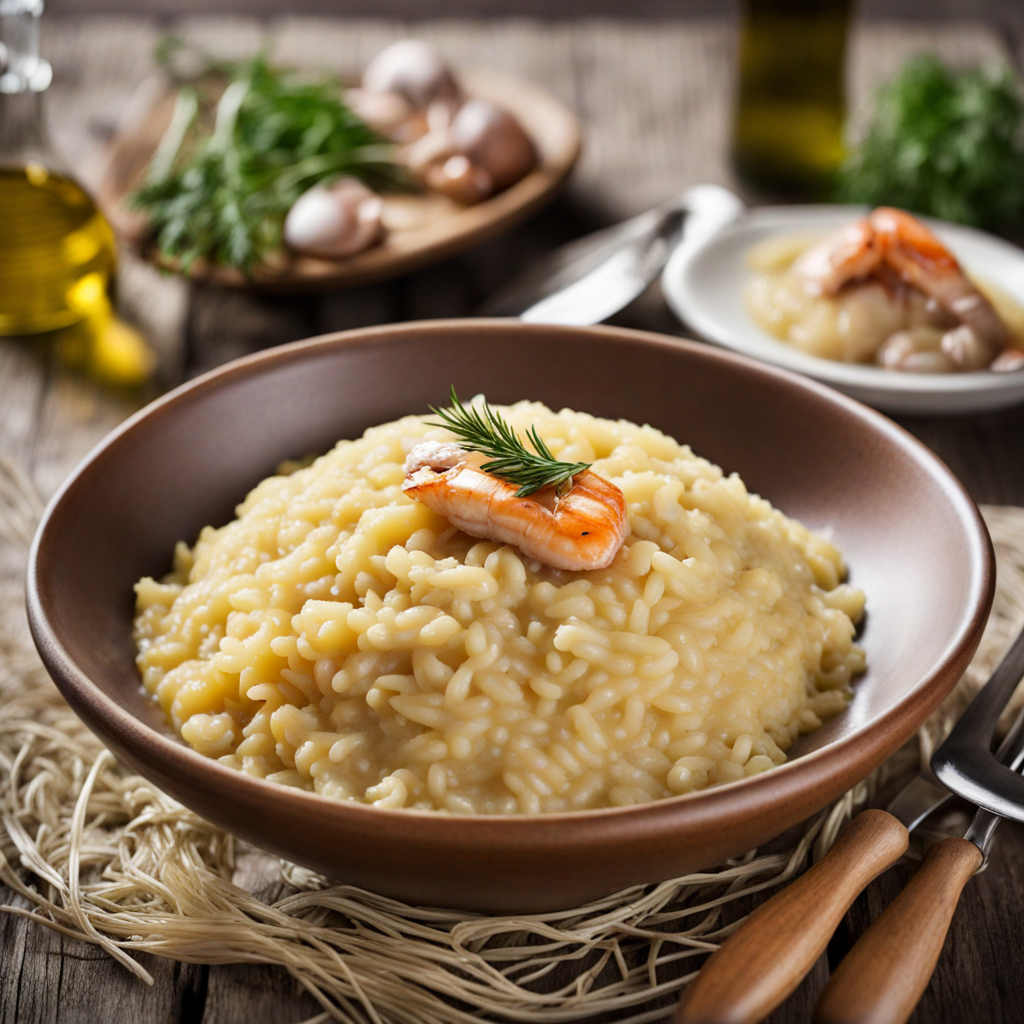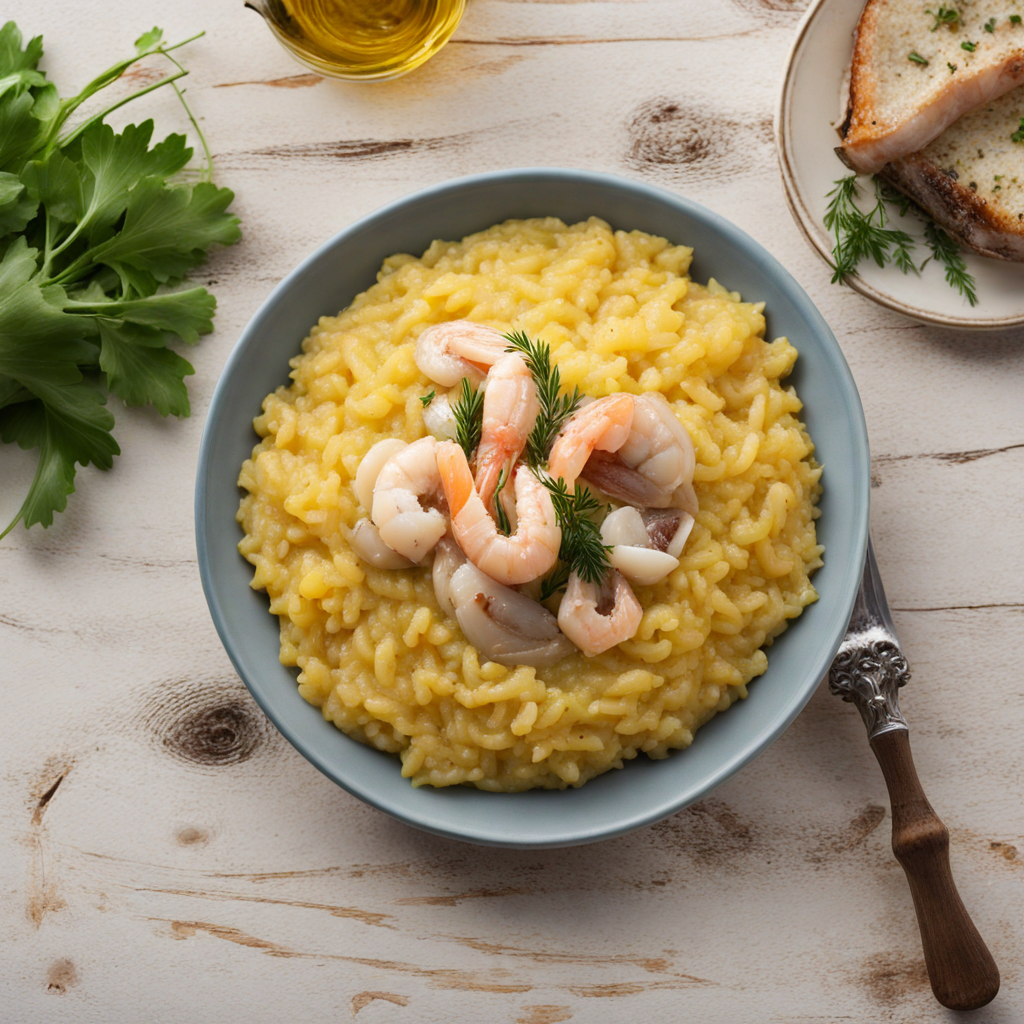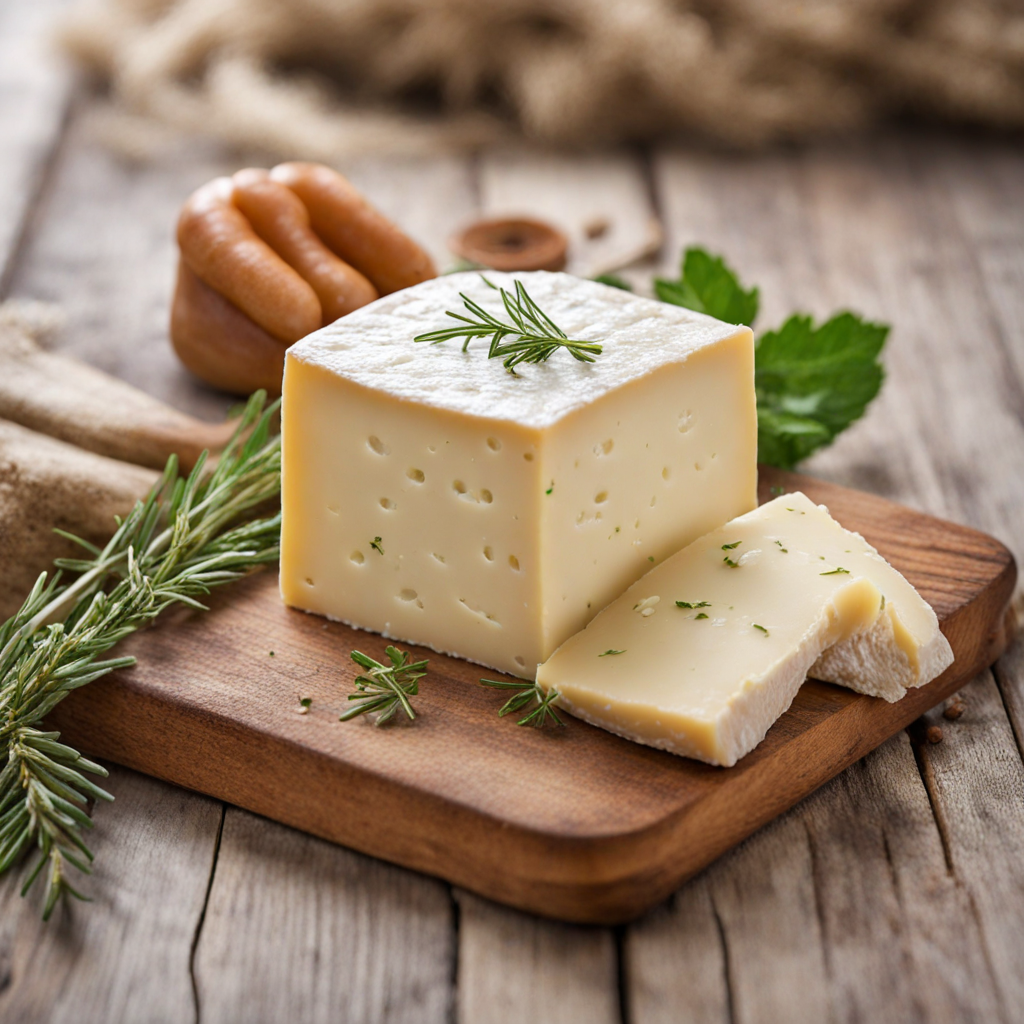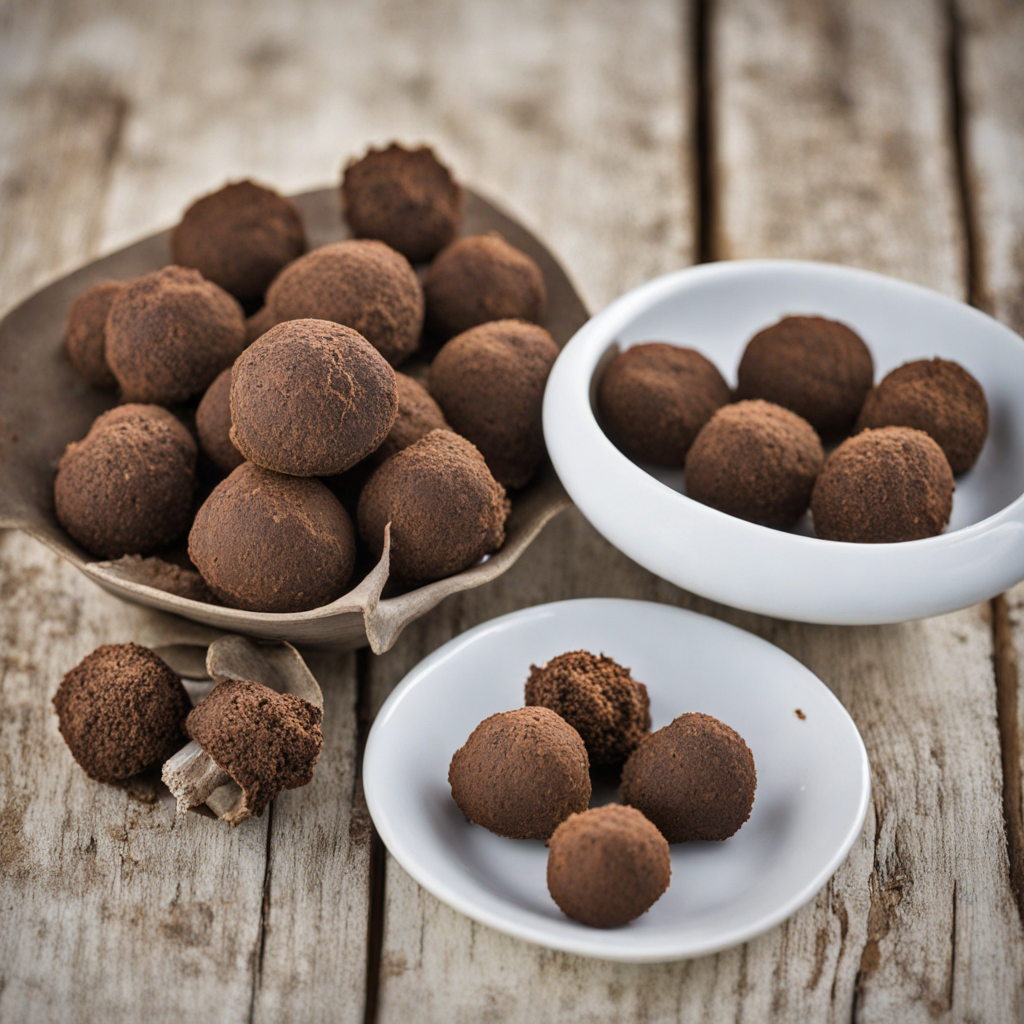Risotto
Risotto, a creamy and indulgent dish, has found its unique identity in Croatia, where it is often infused with the rich flavors of the Adriatic coast. Croatian risotto typically features a base of Arborio rice, known for its high starch content, which gives the dish its signature creaminess. The rice is slow-cooked in a flavorful broth, often made from seafood, vegetables, or meat, allowing it to absorb all the delightful flavors as it cooks. Local ingredients such as fresh fish, shellfish, and even aromatic herbs from the Mediterranean landscape add depth and a distinct character to this beloved dish. In Croatia, risotto is frequently prepared with a variety of seafood, reflecting the country's coastal heritage. Dishes like "Crni Rižot" (black risotto) are particularly popular, made with cuttlefish or squid ink, giving it a dramatic dark hue and a briny, oceanic flavor. The addition of garlic, onions, and white wine enhances the richness, while a sprinkle of fresh parsley or a squeeze of lemon brightens the dish, creating a well-balanced and satisfying meal. Each bite is an exploration of textures and flavors, transporting you to the sun-kissed shores of Croatia. This dish, while often served as a main course, can also be a delightful side, complementing grilled meats or roasted vegetables. The versatility of Croatian risotto allows chefs to experiment with seasonal ingredients, whether it's wild mushrooms in the fall or fresh asparagus in the spring. As you indulge in this hearty yet elegant dish, you'll discover the warmth of Croatian hospitality, with each serving reflecting the pride and passion that goes into creating this culinary treasure.
How It Became This Dish
The History of Rižot: A Culinary Gem from Croatia #### Origins Rižot, the Croatian version of risotto, is a dish deeply rooted in the culinary traditions of the Mediterranean, reflecting the rich tapestry of Croatian history and culture. While the concept of cooking rice in a creamy broth is often associated with Italian cuisine, particularly the northern regions around Milan, the Croatian adaptation of this dish tells a unique story that blends local ingredients and culinary practices with historical influences. The usage of rice in Croatia can be traced back to the 18th century when rice cultivation began in the fertile regions of the country, particularly in the areas around the Neretva River Delta and the region of Slavonia. These areas provided the perfect conditions for rice paddies, influenced by the climate and the region’s agricultural practices. As a result, rice became a staple in the Croatian diet, gradually leading to the creation of various rice dishes. #### Cultural Significance Rižot is more than just a meal; it is a cultural marker that reflects the Croatian way of life. Traditionally, it is a dish made to celebrate gatherings, family events, and festivities. The preparation of rižot often involves the entire family, where the act of cooking becomes a communal activity, fostering bonds among relatives and friends. It is not uncommon for Croatian families to have their own secret recipes or variations of rižot, passed down through generations, making it a personal and cherished dish. The versatility of rižot allows it to be adapted for various occasions. It can be prepared as a simple meal for a weeknight dinner or elevated with luxurious ingredients for special celebrations. Common additions include seafood, mushrooms, vegetables, and meats, allowing for a range of flavors and textures. In coastal regions, seafood rižot made with fresh fish, shellfish, and local herbs is particularly popular, while inland variations often feature wild mushrooms or game. #### Development Over Time As Croatia's history has unfolded, so too has the evolution of rižot. The Austro-Hungarian Empire, which ruled over large parts of Croatia from the late 19th century until World War I, brought with it culinary influences that intermixed with local traditions. During this period, the basic preparation methods of risotto were introduced, and the dish began to take on characteristics that would define the Croatian version. The addition of local ingredients has been crucial to the development of rižot. For instance, the use of indigenous herbs like parsley, chives, and bay leaves adds a distinctly Croatian flair that sets it apart from its Italian counterpart. Furthermore, the incorporation of local cheeses, such as Paški sir from the island of Pag or the renowned sheep cheese from Slavonia, enhances the dish's richness and depth of flavor. With the advent of modern gastronomy, rižot has also seen innovations that reflect contemporary culinary trends. Chefs have experimented with various cooking techniques, such as sous-vide, and have introduced unique ingredients like truffles, saffron, or even local wines to create new takes on the classic dish. This evolution has allowed rižot to maintain its relevance in the ever-changing landscape of Croatian cuisine. #### Regional Variations One of the most fascinating aspects of rižot is the regional diversity exhibited across Croatia. Each area has its own spin on the classic dish, reflecting local traditions and available ingredients. In Dalmatia, for example, seafood rižot is a staple, often made with fresh catch from the Adriatic Sea, such as scampi, cuttlefish, and mussels. The dish is typically flavored with garlic, olive oil, and a splash of white wine, embodying the coastal lifestyle and the bountiful offerings of the sea. In the Slavonian region, the emphasis shifts towards heartier flavors. Rižot is often prepared with game meat, such as wild boar or venison, and is enriched with local paprika, giving it a robust and earthy flavor profile. The addition of mushrooms foraged from the nearby forests is also common, celebrating the region’s natural bounty. Meanwhile, the Istrian variant of rižot might include local truffles, a prized ingredient in the region's gastronomy, adding an aromatic depth that elevates the dish. This showcases how regional ingredients can create a unique identity within a seemingly familiar dish. #### Modern Context Today, rižot continues to be a beloved dish in Croatian households and restaurants alike. It is a staple on menus, often featured in the “traditional” sections, where it is celebrated for its hominess and comfort. Furthermore, the rise of culinary tourism in Croatia has seen international attention focused on the country’s rich food heritage. As tourists flock to coastal towns and inland villages, they are drawn to authentic experiences, and rižot often becomes a highlight of their culinary journey. The global interest in Croatian cuisine has also led to a resurgence in the appreciation of traditional cooking methods. Chefs are increasingly looking to preserve the authenticity of dishes like rižot while also incorporating modern techniques and presentations. This balance of tradition and innovation ensures that rižot remains not only a dish of cultural significance but also a canvas for culinary expression. #### Conclusion Rižot stands as a testament to Croatia’s culinary heritage—a dish that has evolved over centuries yet retains its roots in local culture and community. It represents the fusion of history, geography, and the Croatian spirit, showcasing the importance of family, tradition, and regional diversity in the nation's culinary landscape. As Croatia continues to emerge on the global food scene, rižot remains a symbol of its rich gastronomic history, inviting both locals and visitors alike to savor a taste of its past while looking toward a flavorful future.
You may like
Discover local flavors from Croatia







